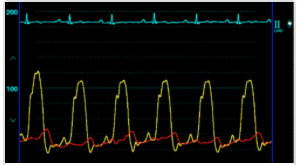Waveform Interpretation: Left Atrial, Aortic, Peripheral Arteries, Left Ventricular

Recording hemodynamic pressures from the left atrium can be straightforward in the presence of certain abnormalities such as atrial septal defect or patent foramen ovale, but will require trans-septal puncture in many patients. To properly interpret hemodynamic events, it is important to understand the limitations of using the pulmonary capillary wedge pressure as a surrogate for the left atrial pressure. When properly recorded, left atrial pressures can often provide critical diagnostic information that can guide appropriate care for patients and even help to avoid unnecessary procedures or operations.
In this course, you will learn:
- To identify differences in pulmonary capillary wedge pressure and left atrial pressure recordings.
- To identify patients in whom a left atrial pressure recording will provide important diagnostic information – especially if a trans-septal puncture is needed.
- To distinguish differences in amplitude and timing of pressure recordings made in various portions of the arterial tree.
- To define the typical features of the left ventricular pressure tracing, including LVEDP.
Method and medium:
Learners participate in the interactive learning modules by correctly answering multiple choice questions dispersed throughout. Learners will be prompted to try again if a question is answered incorrectly.
The course will open in a new tab – to exit the course, simply close that tab.
Estimated time to Complete: 20 minutes
Credit/contact hours: .25
Expiration date: March 7, 2021
Course published March 8, 2018
